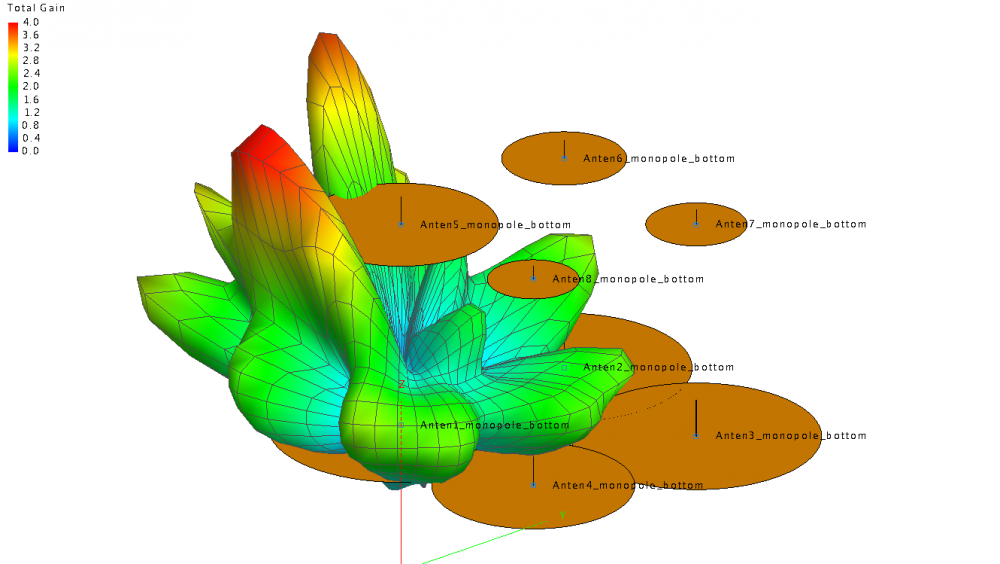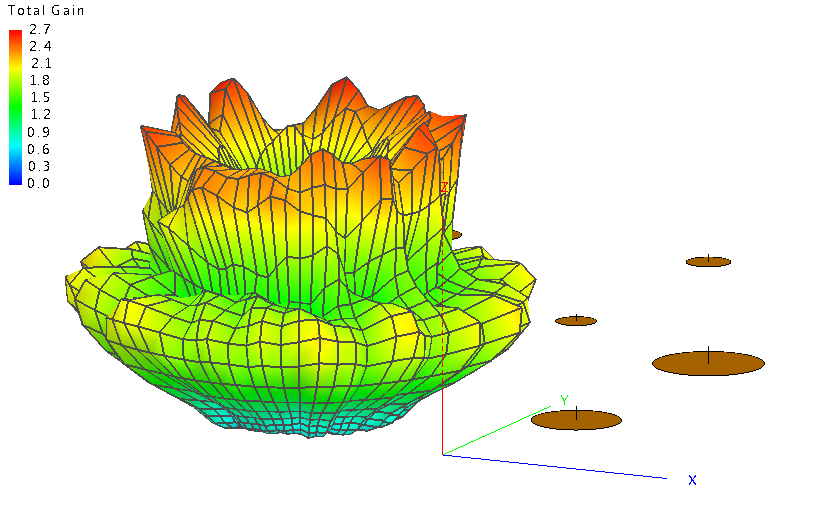Hi.
I am simulating some antennas and try to make sense about total gain graphs.
In below graph all the antennas close to each other. And i get the following gain pattern for a particular antenna.
<?xml version="1.0" encoding="UTF-8"?>
In some angles, gain goes up to 4.0
Then i placed the antennas far away and observed the gain of previous particular antenna.

I get the maximum gain up to 2.7 only.
We can see that the gain getting closer to its ideal pattern but why the total gain is not much as the gain observed before?
Why it is decreased?
Between these two graphs i only changed to placement of the antennas, nothing more.
Thanks for answers...